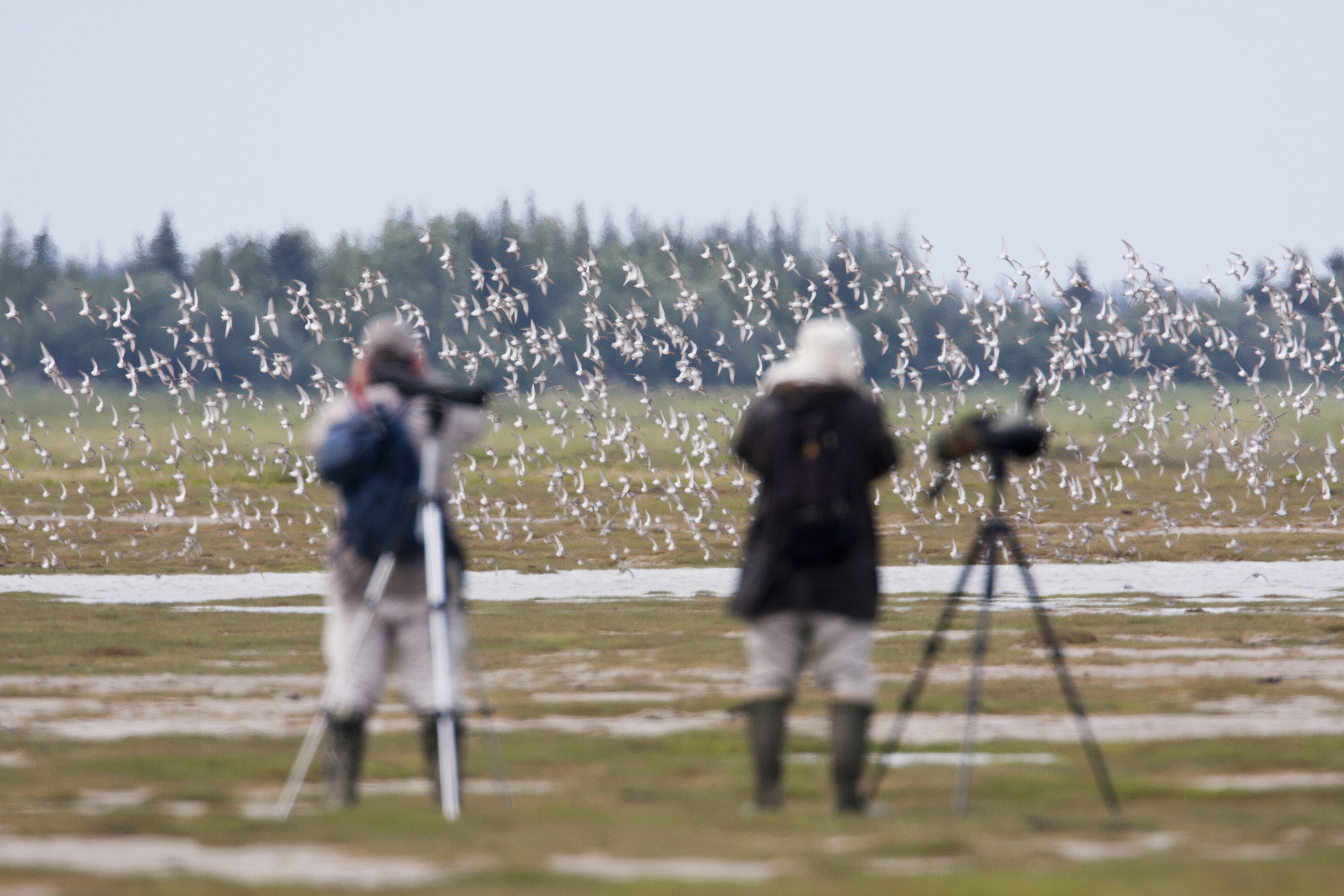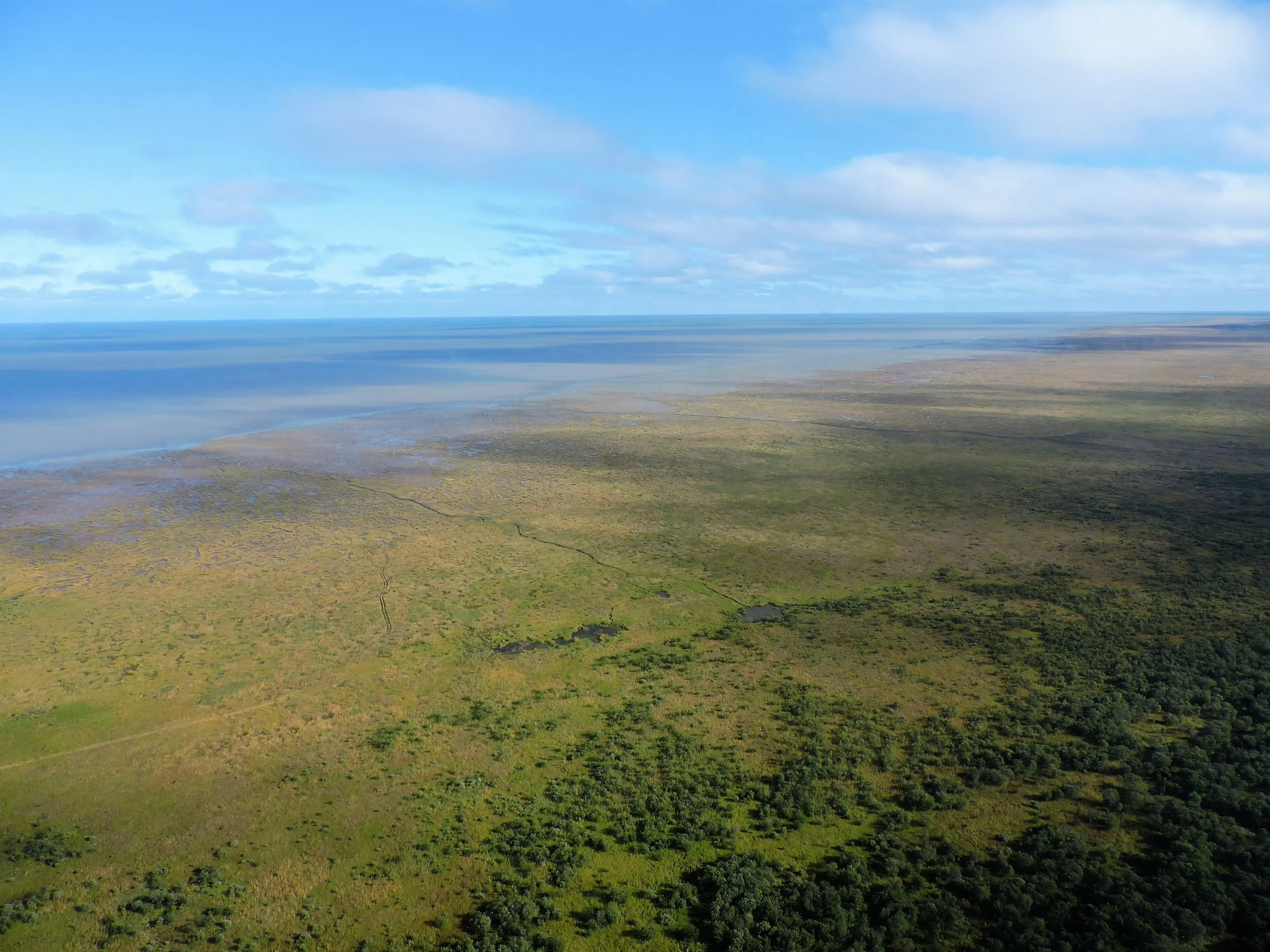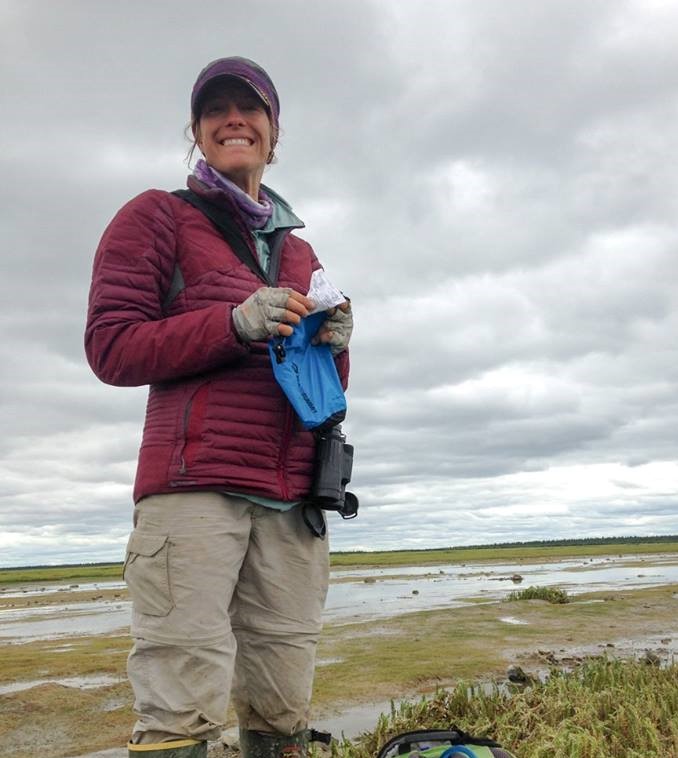
Why James Bay?
The Hudson Bay Lowland is the third largest wetland complex on earth. The coastal ecosystems of southern Hudson Bay and James Bay constitute a global hotspot for breeding and staging water birds (i.e., shorebirds, waterfowl, and loons) and other Neotropical migrants. It is estimated that most Red Knot, subspecies (rufa), a large proportion of the global populations of Hudsonian Godwit, Semipalmated Sandpiper, White-rumped Sandpiper, Dunlin and several other shorebird species either breed (e.g., Whimbrel, Short-billed Dowitcher, geographically disjunct Marbled Godwit population) in the lowlands or use areas along the coast to add fat reserves and undertake partial moults (e.g., White-rumped Sandpiper, Semipalmated Sandpiper) in preparation for their southbound migrations to the southern hemisphere.
The value of the Lowland for birds has been well known to the Cree of Hudson Bay and James Bay for millennia. Migrating waterfowl, and shorebirds provide an income to local communities through ecotourism and hunting activities. While traditional interactions with the land have changed in recent times, the Cree are still very much connected to the land and its wildlife. Members of the Moose Cree First Nations have since 2011 participated in field research at several remote locations on the James Bay coast and it is anticipated that this participation will continue (and increase) as members of the First Nations community continue to develop an increasingly stronger relationship with the organizations involved with this research.
Nine Important Bird Areas (IBA) straddle the southern James Bay coastlines in Ontario, Quebec, and Nunavut. Of these, portions of only three contain James Bay Migratory Bird Sanctuaries (MBS) and are formally protected through provincial or federal legislation/regulation; they are the Akimiski Island MBS, Moose River estuary MBS, and Hannah Bay MBS. The remaining sites have no legal form of protection. Pioneer research on shorebirds along James Bay in the 1970s led to the establishment of the Western Hemisphere Shorebird Reserve Network in 1985 and in the 1990s Canadian Wildlife Service compiled an inventory of potential WHSRN sites along both Hudson Bay and James Bay that stands today. The site selection for this project has been based on these seminal surveys.
Persistent, long-term declines observed in the populations of many shorebird species in North America necessitate that data be gathered at breeding, staging, and wintering sites to further elucidate cause of declines and determine appropriate conservation actions. This project will address staging habitat along a hemisphere-significant shorebird staging area in Ontario. The project will improve the conservation of shorebirds across their hemispheric range by providing a significant time-series dataset in support of the conservation of key staging locations along the James Bay coast, as well as broadening our understanding of migrant shorebird phenology and the needs of shorebirds using the coast as critical staging habitat. This project is particularly important for Red Knot, Hudsonian Godwit, Semipalmated Sandpiper, White-rumped Sandpiper, Dunlin and Marbled Godwit to establish or confirm locations along the James Bay coast where significant numbers stage; determine the length of stay of individuals; determine food resources and availability; determine local movements among various locations; and determine use by age classes. The need for undisturbed feeding and roosting sites necessitates that those areas supporting significant concentrations of migratory shorebirds be provided protection, either through formal designation in federal and provincial habitat regulations for species of concern, or through stewardship by mechanisms afforded by such programs as WHSRN and IBA.
Our Researchers
The James Bay Shorebird Project is fortunate to work collaboratively with many agencies and researchers from across the Western Hemisphere. Key research affiliates recently completed graduate studies with focus on shorebirds in James Bay. Learn more about them and their research below.
Allie Anderson
Allie Anderson successfully defended her PhD. at Trent University under the supervision of Dr. Erica Nol and Dr. Paul Smith in December 2019. In partnership with the Canadian Wildlife Service, Moose Cree First Nation, Bird Studies Canada, and the Ontario Ministry of Natural Resources, she investigated the importance of southwestern James Bay as a stopover site for migratory shorebirds.
Photo courtesy Karl Bardon
Amie MacDonald
Amie MacDonald successfully defended her MSc. thesis at Trent University in December 2019. Amie studied Red Knots during migratory stopover in James Bay, Ontario under the supervision of Dr. Erica Nol and Dr. Paul Smith. In partnership with the Canadian Wildlife Service, Moose Cree First Nation, Bird Studies Canada, and the Ontario Ministry of Natural Resources, she investigated Red Knot population ecology and determined how many rely on James Bay during their annual southbound migration that spans the Western hemisphere. Her research will inform conservation efforts and aid population recovery for this endangered shorebird. Amie has travelled to James Bay to study shorebirds every summer since 2014.


